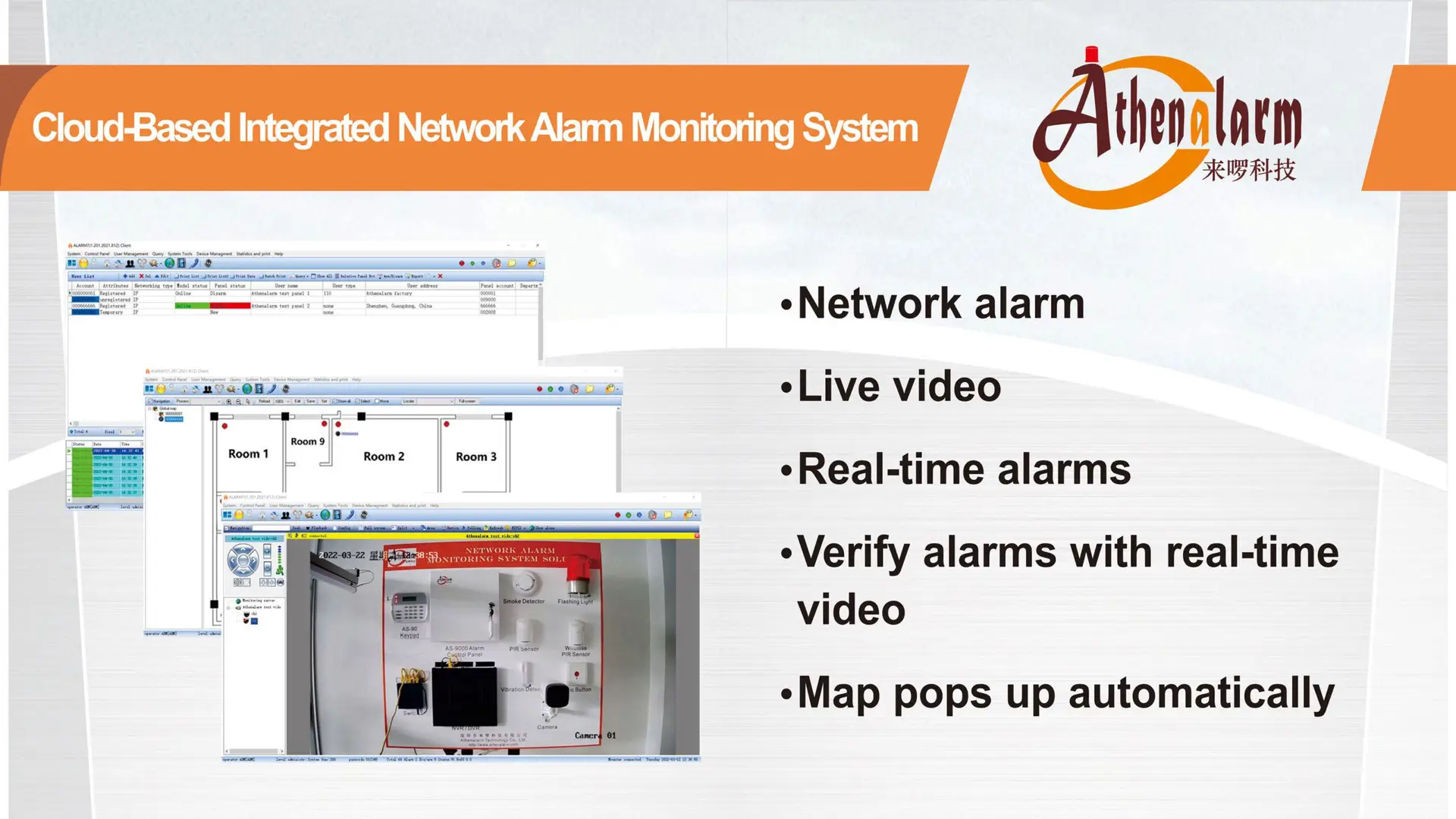



Wireless Network Alarm System: A Modern Security Solution
Early alarm systems primarily relied on wired telephone lines to report incidents after they occurred. Upon activation, the system would send a signal to the police, who would dispatch personnel to investigate the scene. This approach was mainly reactive, leading to delayed responses. A common issue with wired telephone systems was the occurrence of “busy lines,” which caused significant delays in transmitting alarm signals, further hindering the timely resolution of cases.
With the advancement of communication technologies—such as wireless positioning, computer management systems, and the introduction of wireless networks—a more efficient wireless alarm system was developed. These systems use low-frequency wireless information positioning to transmit data to a central computer for immediate processing. As a result, wireless network alarm systems can quickly pinpoint the location and nature of an event, offering valuable time to prevent escalation. This rapid response capability has contributed to their growing popularity and widespread adoption.
1. Components of a Network Alarm System
Traditional alarm systems typically consisted of three main components:
- Front-end detectors: Devices that detect unauthorized entries or breaches.
- Detection signal transmission: The method used to transmit data from detectors to the control panel.
- Alarm control panels: Devices that manage the alarm system and send alerts to the monitoring center.
Modern network alarm systems, however, integrate the detector and control panel into a single unit at the front end. The transmission part, which connects the alarm control panel to the monitoring center, serves as the communication channel. The monitoring center itself has evolved into a backend management platform, offering more efficient, real-time data processing and control.
2. Limitations of Traditional PSTN Communication
For large-scale regional alarm systems, the traditional Public Switched Telephone Network (PSTN) communication method has become increasingly inadequate. PSTN requires a physical voice connection to report alarms, which can take 10-20 seconds to establish—causing significant delays. This delay is especially problematic for users across multiple regions or large-scale PSTN networks. Other inherent issues with PSTN include:
- Slow response times: The system requires manual dialing and physical connections, which prolongs the transmission time.
- Limited interactivity: PSTN communication is one-way, with the monitoring center only passively receiving data. It cannot check the system’s status or interact with front-end devices.
These limitations make PSTN-based alarms vulnerable to failure, especially in regions with poor telephone network coverage, increasing the risk of delayed responses.
3. Advantages of Network Alarm Systems
Network-based alarm systems offer several advantages over traditional PSTN methods:
- Bidirectional communication: Unlike PSTN, network systems allow the monitoring center to actively communicate with and control front-end devices. This capability helps identify issues such as device malfunctions or network failures.
- Real-time system monitoring: If a fault occurs, such as the disconnection of the alarm control panel from the network, the monitoring center is immediately alerted. In contrast, PSTN systems may fail to report such issues.
- Enhanced transmission quality and reliability: Network alarm systems provide better-quality transmission, reducing the impact of line noise and faults commonly found in PSTN systems.
4. Key Features of Wireless Network Alarm Systems
The primary goal of a wireless network alarm system is to report incidents in real-time, ensuring rapid detection and response to security breaches and maximizing the potential to prevent or mitigate damage.
Key functions of wireless network alarm systems include:
(1) Monitoring of PSTN and IP Networks:
- When a wireless alarm device is connected to a wired alarm control panel, it continuously monitors the status of the PSTN or IP network. If the system detects an issue with the wired network, it automatically switches to wireless mode, ensuring uninterrupted alarm transmission.
- In locations without PSTN or IP networks, the system will default directly to wireless mode to ensure continued functionality.
(2) Alarm Signal Transmission:
- The wireless alarm module can autonomously transmit alarm signals, such as a line fault or device malfunction alert. It can also relay real-time information from the alarm host.
(3) Standardized Alarm Information Format:
- To ensure compatibility with existing monitoring systems, wireless systems must adhere to standardized formats for data transmission. This ensures seamless integration with current systems.
(4) Embedded Installation:
- The wireless transmission module can be integrated into the alarm control panel, allowing the system to operate smoothly alongside other networked alarm systems without requiring major hardware changes.
5. The Growing Popularity and Future of Wireless Network Alarm Systems
The security industry continues to evolve with advancements in technology. Wireless communication technologies, such as 4G and 5G, are opening up new possibilities for alarm systems. As mobile networks expand, wireless network alarm systems are set to become even more prevalent due to the following reasons:
- Ease of installation and maintenance: Wireless systems eliminate the need for extensive wiring, making them faster and easier to install and maintain.
- Greater scalability: Wireless systems are highly flexible and can be easily scaled to cover larger areas or integrated with other smart devices.
- Reduced dependency on infrastructure: With 4G/5G technologies, alarm systems can operate independently of wired networks, which is particularly useful in remote locations or areas with limited traditional infrastructure.
Wireless network alarm systems are increasingly favored in home security and small commercial applications. As technology progresses, wireless solutions are expected to dominate both residential and commercial security sectors.
6. Conclusion
Wireless network alarm systems have revolutionized the security alarm industry by offering faster, more reliable, and cost-effective solutions compared to traditional wired systems. With the continued growth of wireless communication technologies such as 4G and 5G, these systems are becoming the standard for modern intrusion detection. Their ability to provide real-time monitoring, reduce false alarms, and adapt to dynamic environments makes them an essential component of contemporary security infrastructure.
For individuals and businesses considering an upgrade to their alarm systems, transitioning to wireless network technology offers significant benefits in terms of reliability, flexibility, and future-proofing.
